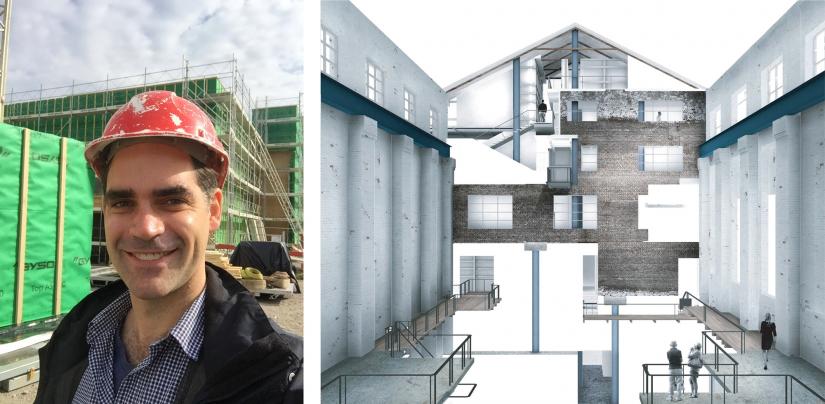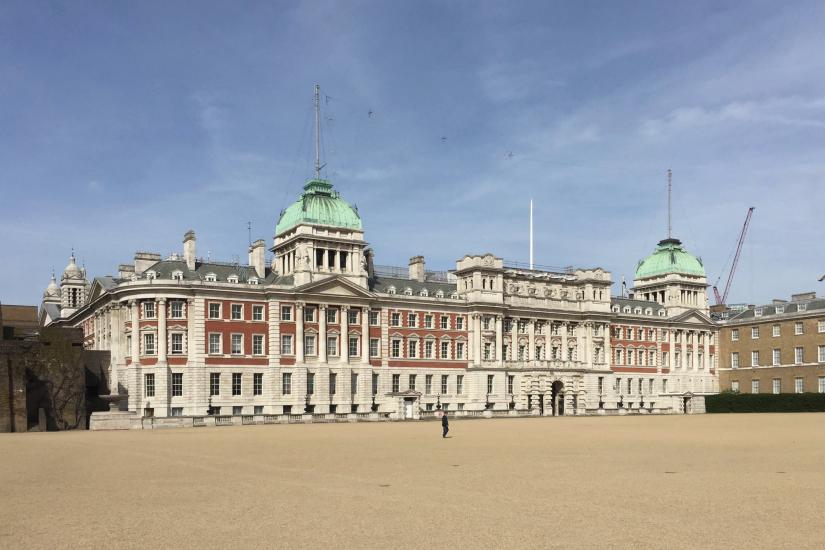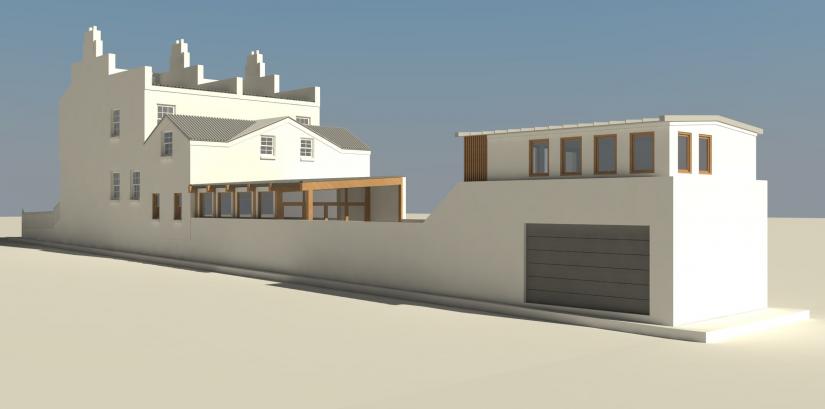Paving the way for a sustainable revolution
UTS architecture graduate Thomas Trudeau has done it all – and he’s got four degrees to prove it.

Left: Trudeau on a Jack Greenland research visit in Switzerland. Right: Trudeau's UTS masters project, done in conjunction with James Vlismas.
The first, an art history degree, set him up for a career in some of the world’s best- known galleries, including La Collezione Peggy Guggenheim in Venice. His second, a degree in building conservation, led to 10 years as a conservation consultant in Sydney.
But it was his third and fourth degrees – the UTS Bachelor of Architecture and the UTS Master of Architecture – that paved the way for the third act in his career: founding Studio Trudeau, a sustainable architectural practice operating in Sydney and Barcelona, with an eye to the UK.
Trudeau came to architecture after reaching what he saw as a ceiling in his conservation career.
“I felt there was a limit in terms of what I could achieve, such as my ability to influence projects, have input into them, without being an architect or an engineer,” he says.
“So after a few years, I thought, okay, time to get my architecture degree.”
UTS was a university that prided itself on urban speculation, on real future thinking.
He was in his late 20s when he started his UTS bachelor’s degree, and in his early 30s when he followed up with the master’s, which he completed in 2015. Coming back to full-time study as a mature-age student was a challenge, he says, but by the time he started his postgraduate studies, everything was falling into place.
“UTS was a university that prided itself on urban speculation, on real future thinking, and I wanted something that would take me firmly out of the heritage sphere and help me build a complementary skillset,” he says.
“I liked their speculative approach, I liked their attitude to technology, and they seemed to bring both together in a university environment. The master’s was an extraordinary time.”
Fast-forward four years and Trudeau is at the helm of Studio Trudeau, a new architectural practice with a focus on the re-use and retrofitting of existing buildings and delivering more sustainable solutions when it comes to new builds. Here, he’s combining his heritage and architectural expertise, honed in practices such as Godden MacKay Logan (now GML) in Australia and BDP in the UK, where he worked on high-profile projects like the Old Admiralty Building in Whitehall, London.

Trudeau honed his skills by working on high-profile projects like the Old Admiralty Building in Whitehall, London, with BPD (2016-2018).
His current projects at Studio Trudeau – refurbishing and extending a 19th century terrace house in Sydney and building a new timber home in the scrublands outside Armidale that responds to the local landscape – are a microcosm of the studio’s focus on sustainable design. It’s an approach to architecture that responds to the increasingly urgent need for high-impact industries to make a commitment to more environmentally responsible practice.
“The building industry is responsible for some 30-40% of global emissions, which is extraordinary,” Trudeau says.
“As architects – that is, as key decision-makers – in an industry responsible for that much environmental impact, we need to acknowledge a degree of responsibility. Conversely, it’s an opportunity to drive change for the better – an ethical imperative, I think – in both guiding clients to better solutions, but also agitating for better standards across the industry.”
One of Trudeau’s key concerns is around the concept of embodied energy, being the amount of energy that goes into the manufacture of building materials and the construction process itself in order to bring a new building online.
The building industry is responsible for some 30-40% of global emissions, which is extraordinary.
While green star ratings and energy efficiency standards are now considered critical components of new builds, Trudeau believes that the conversation doesn’t account of the fact that the construction of a building can produce significant carbon emissions that aren’t offset by the building’s energy efficiency once in operation.
“There’s an ever-increasing urgency to reusing and adapting existing buildings, because they have so much embodied energy in them,” he says.
“You have this basically totally fallacious argument that says, ‘We won’t look at the extraordinary amount of carbon emitted in building all the metal components in this building or the demolition of what was actually there. We’ll only look at the operational costs of the building. But it might need to operate for 80-110 years before it offsets the energy use in its production.”
As well as delivering sustainable architectural solutions in Sydney and Barcelona, Studio Trudeau has a fledgling research arm that aims to drive new innovations, both in terms of sustainable design and within the broader built environment sector.

A sketch proposal of current Studio Trudeau project, Glebe House.
Current research is focused on improving efficiencies in information handling procedures on construction projects; developing more streamlined workflows around construction and building contracts; and exploring new opportunities for sustainable building materials, with an emphasis on timber – an interest originally driven by his receipt of the UTS Jack Greenland Scholarship, which funded a research trip to Europe to explore the use of engineered timber in a range of construction projects.
Sustainable materials remain an important piece of the puzzle when it comes to Trudeau’s architectural practice, but he says that there are bigger questions around creative and efficient re-use in the built environment that will ultimately set his practice apart.
“I’m focused now on developing better methods to deal with the complexity of existing places – emphasising the benefits of refits and adaptations, rather than just rebuilding,” he says.
“I also want to provide sustainable new architecture that’s as beautiful as it is efficient, whether it’s a house, garage or gallery, particularly in Australia, where these conversations are just beginning to gather pace.”
Learn more about the UTS Bachelor of Design in Architecture and the UTS Master of Architecture.
